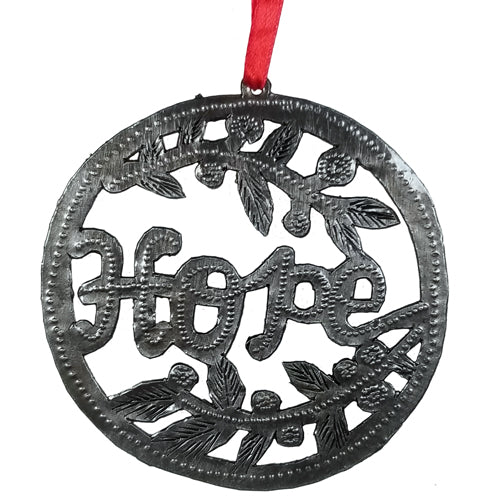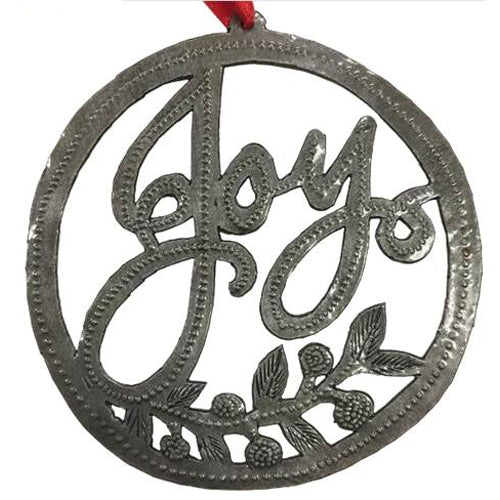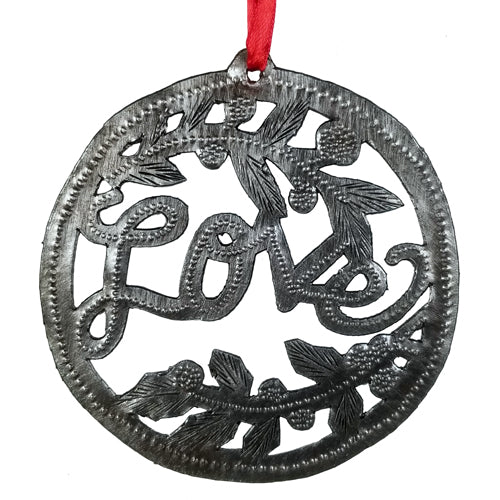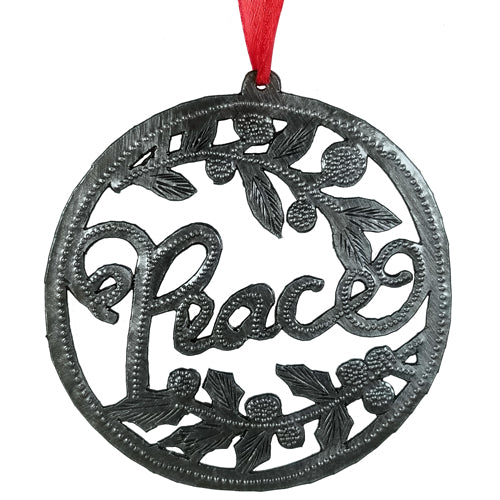OWP
Adornos navideños de palabras de metal reciclado -Comercio justo- Haití
Adornos navideños de palabras de metal reciclado -Comercio justo- Haití
No se pudo cargar la disponibilidad de retiro
La mayoría de nosotros podemos utilizar un poco más de Amor, Esperanza, Paz y Alegría en nuestras vidas. Estos adornos, hechos a mano con tambores de acero reciclados, sirven como recordatorios que nos ayudan a centrar nuestros pensamientos en las cualidades positivas que hacen la vida hermosa. Se pueden colgar dentro o fuera, durante todo el año o para ocasiones especiales; Todo depende de tu imaginación. Además de ayudar a los artesanos económicamente desfavorecidos, también pueden inspirar excelentes conversaciones con amigos y familiares.
El arte de hacer artesanías en metal a partir de tambores de metal reciclado comenzó hace unos 50 años en Haití, cuando un herrero utilizó tambores de metal desechados para hacer cruces para el cementerio. Hoy en día, los artesanos del pueblo de Croix de Bouquets en Haití se dedican a transformar tambores de metal usados en hermosas obras de arte.
- Cada adorno tiene aproximadamente 4" de diámetro.
Hecho a mano en Haití e importado de comercio justo.
Haití es conocido mundialmente por su arte único en tambores de acero. Los artesanos recolectan estos tambores industriales recuperados para crear hermosas obras de arte. Primero, el artista retira ambos extremos redondos del tambor y llena el cilindro con paja y hojas secas de plátano o caña de azúcar. Le prende fuego para quemar la pintura o los residuos del interior del cilindro. Una vez que el metal se enfría, se corta y se aplana hasta formar un "lienzo metálico".
Lea nuestra descripción ampliada a continuación haciendo clic en "Acerca de los artesanos" para obtener más información sobre cómo se fabrican estas hermosas joyas y para obtener más información sobre los artistas que las hacen.
Share
About the Artisans
About the Artisans
 Joyeria Semilla meaning Seed Jewelry is a small fair-trade workshop in the Andean town of Villa de Leyva, Colombia. Girasol Taborda, a local artisan and social entrepreneur, started the workshop in the mid-1990s.
Joyeria Semilla meaning Seed Jewelry is a small fair-trade workshop in the Andean town of Villa de Leyva, Colombia. Girasol Taborda, a local artisan and social entrepreneur, started the workshop in the mid-1990s.
Joyeria Semilla’s objective is three-folds; to create new jobs, revive Colombia's handicrafts sector and to motivate locals to better manage their natural resources. The organization works primarily with socially and economically disadvantaged youths, single mothers and people with disabilities in the area. The company offers free training in product design, technical training and marketing to new members. Joyeria Semilla has trained them in the craft of jewelry-making.

Caña Flecha or “Gynerium Sagittatum” is a locally found palm tree in the regions of the Caribbean coast. The leaves from this plant are used for making jewelry, woven hats, bags and baskets. The Zenú Indians were and their descendants inherited the tradition of picking veins of the green palm leaf for weaving. These veins were made into woven hats and other products for their personal use.
The Zenú culture is said to have existed between 200BC to1600AD. With the arrival of the colonizers in the 16th century, the indigenous community declined of unknown reasons. Today a very small population remains that claims the inheritance of the almost extinct Zenú tribe. Known for their skills in the construction of major waterworks, canals and irrigation system along with being skilled goldsmiths, examples of their accomplished craftsmanship are found in various museums around the world. Their larger means of subsistence were hunting, farming, fishing and trading.
Caña Flecha is found in abundance in the region, and hence makes for a sustainable and naturally available raw material for these products. Every bit of the plant is utilized – from using in building walls and roofs in houses to food for cattle and medicinal purposes. It is from the central vein of the leaf that the fibers for weaving are obtained. After the hard surface is peeled off, the fibers are left in the sun to dry and undergo a natural tinting process; these fibers are barely about 1 millimeter in thickness and hence call for a lot of skill and patience to weave with. The dried fibers are then processed for natural coloration - some are boiled with lemon to whiten them and some are treated with mud and boiled with plantain leaves to blacken them. The designs are based on ancient motifs and mathematical representations, which are inspired by the early Zenú culture.










